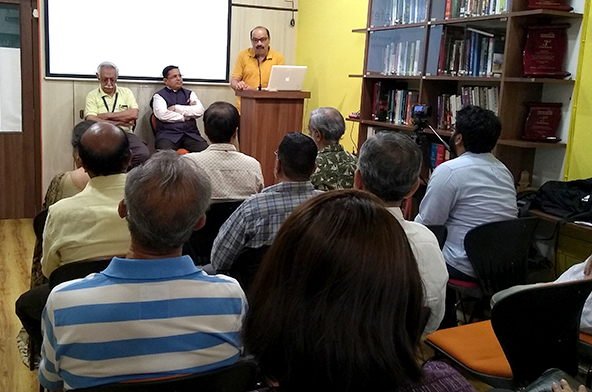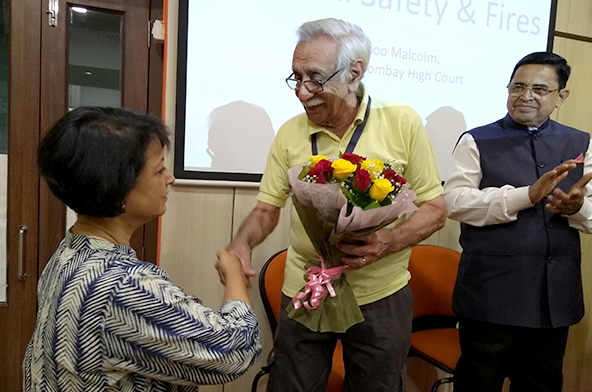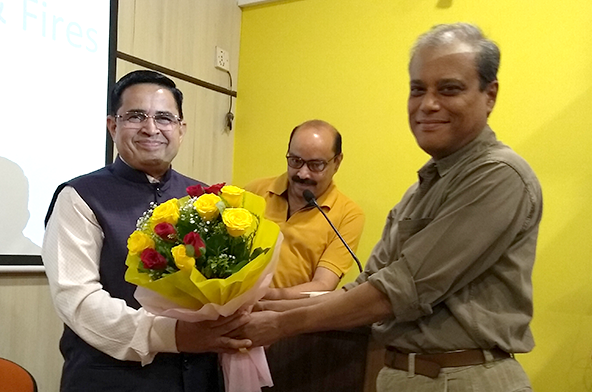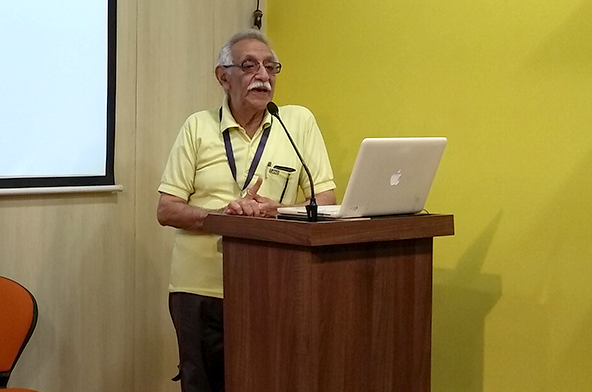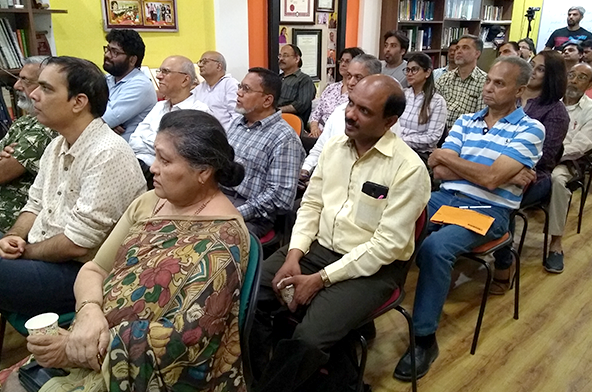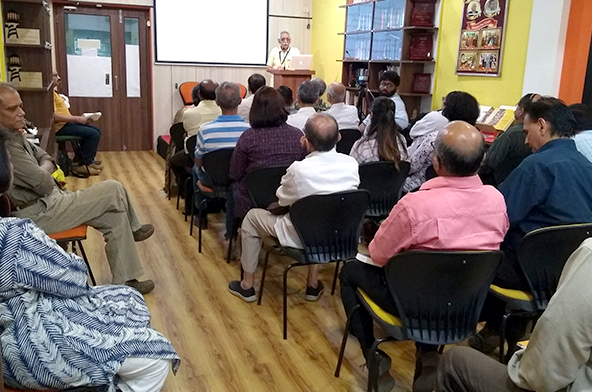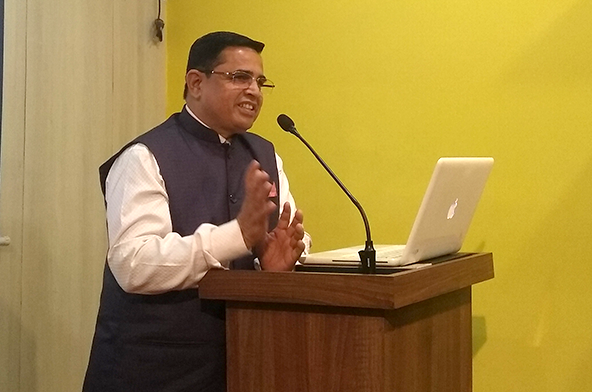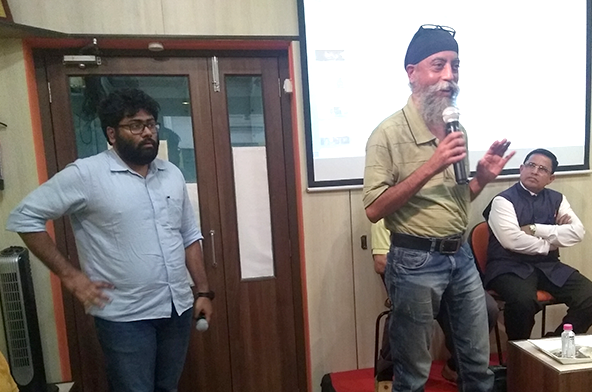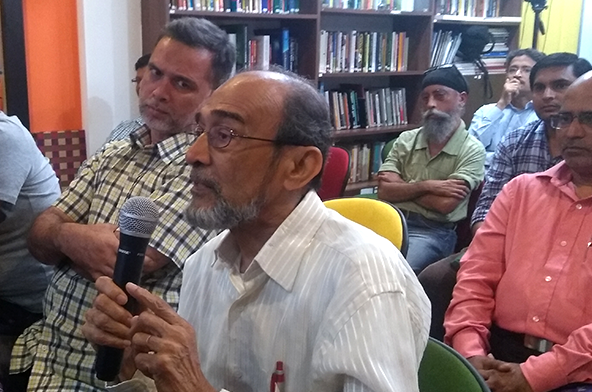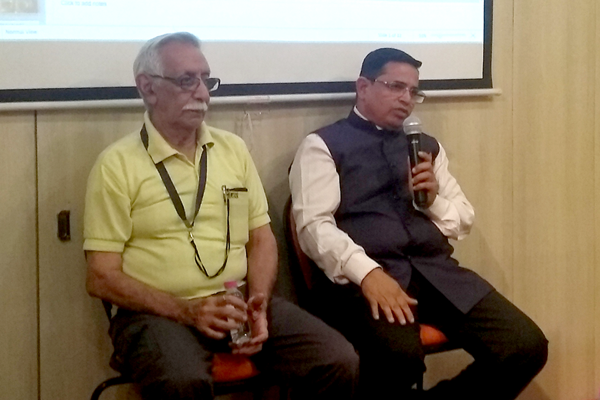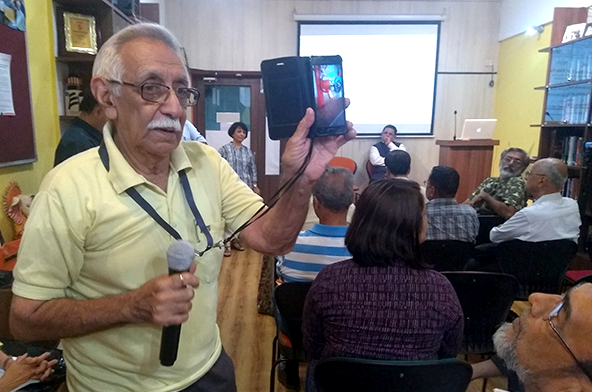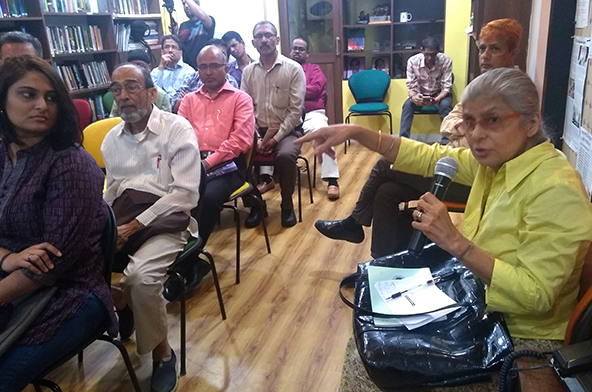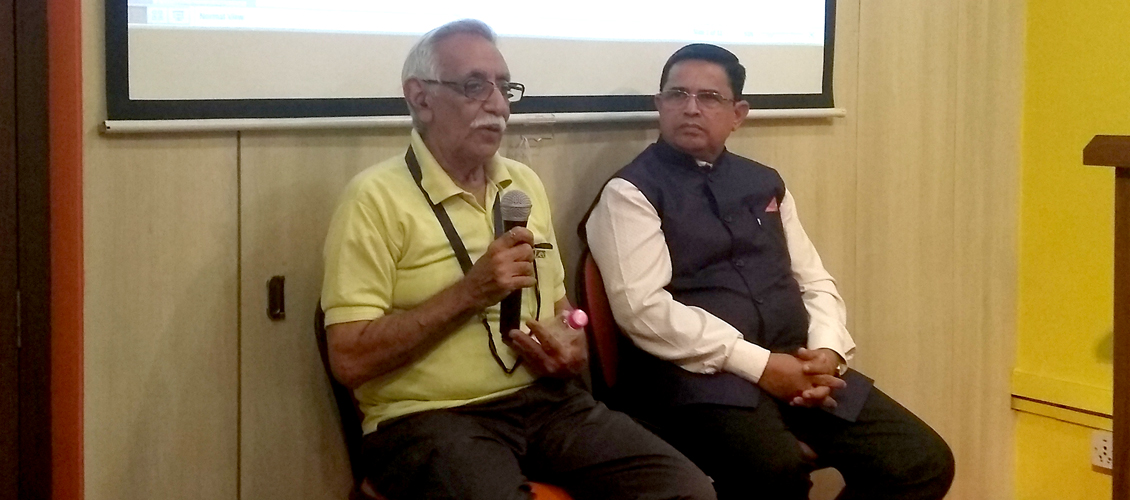
Mumbai sees an unusually high number of fires and other disasters every year. While experts have not been able to pinpoint a single cause, haphazard development, lack of fire and electrical audits are some common reasons. Keeping this in mind, Moneylife Foundation had organized a special session on Do s and Dont s of Fire Safety by Adv Bapoo Malcolm and Shivajirao Bagat, deputy controller of Civil Defence Organistion.
Adv Malcolm began the session by providing an overview of electricity and how it can work against us if not handled with proper care. Today, electricity is one of the leading causes of death and combined with fires due to short circuits or faulty wiring it can be quite deadly.
In his talk, Adv Malcolm spoke about the common causes of electrical accidents such as use of defective tools, cables or equipment, improper installation of electrical equipment, old wiring, flammable materials left near exposed electrical wiring, and loose connectors.
He also shared simple rules that one must follow while handling electricity such as using wires with appliances of proper capacity and insulation, not overloading the electrical circuit, using appropriate circuit breakers and only using appliances with the ISI mark.
Do not use the common yet wrong practices of inserting too many plugs into a single socket, using temporary wiring or sticking bare wires directly into a socket. Careless mistakes such as these can be a quick stop solution at the moment, but will most certainly prove lethal, Adv Malcolm added.
Covering every aspect of a fire, Mr Bagat from CDO, started the talk explaining how a fire starts and spreads by filling up any space with thick black smoke within minutes. A person trapped inside a place on fire has a very short amount of time to make critical decisions on escape.
Mr Bagat advised, With thick black smoke it will become very difficult for a person to clearly see their surroundings and identify safe pathways of exit. You should try your best to escape from heat before it starts getting dark due to the heavy smoke.
Once a fire has started, life threatening toxic gases are bound to be released. Breathing even a small amount of smoke and such toxic gases can make a person drowsy, disoriented and short of breath. The odourless, colourless fumes can lull you to sleep even before the flames reach you door, he added.
During his talk, Mr Bagat repeatedly stressed that time is precious and every second counts during a fire outbreak. He says, This precious time should not be wasted gathering your valuables because your life is more precious thant the valuables.
Some of the basic tips that he offered were to stay calm, not to immediately panic and start running. Your first step should be to escape out of the premises and then proceed to calling for help. Once you have ensured that there is no one left behind and a safe path of exit is open, you should also attempt to close all doors and windows on your way out. While escaping, only use routes that have been specifically designated for that purpose and always use staircases instead of elevators, he added.
According to Mr Bagat, if you are in a situation where you are trapped in a smoke filled area, it is advised to lie down and keep your nose close to the ground, then crawl towards an exit point. If you are trapped in your room and do not see a clear path out, shut the door and block any gaps that might let smoke or fumes through. Gaps under a door should be covered by a rug, blanket or any other piece of clothing available nearby. It is important to note, that when you are trapped in a room, under no circumstances should you jump out of the window. Instead, signal or shout for help to draw the attention of rescue personnel on the ground.
These days, especially in Mumbai there have been quite a few fires in high-rise buildings. Speaking about such fires, Mr Bagat said, If a fire does break out in a building in your flat, in most circumstances you should be safe in your own flat. But if your flat is affected by the heat or smoke, leave at once while closing doors and windows behind you. He also spoke at length about the various prevention systems such as smoke, heat and gas detection systems, overhead fire sprinkler system, fire pump and underground water tanks.
When speaking about fire safety in high rise buildings, Mr Bagat talked about following the rules and regulations as laid down in the National Building Code (2005/2016) and the Maharashtra Fire Prevention & Life Safety measure Act (2006/2009). There are a few basic rules that every high rise resident should strictly follow ashtrays for indoor smoking, waste receptacles to be emptied regularly, correct rated wires to be used for all electrical appliances, faulty appliances to be repaired or replaced immediately, etc. Most important of all, emergency exit doors should be kept free from obstructions and safety equipment should be maintained in high standards with checks at regular intervals. Every floor in a high rise building should have an Emergency Evacuation Plan placed at strategic locations, indicating the exits that are available on that particular floor.
Although fire evacuation drills have not become mandatory, Mr Bagat feels that buildings should conduct them at regular intervals, so that residents become familiar with the emergency exit routes available to them.
Being thorough in his talk, Mr Bagat also shared the most effective way of contacting the local Fire Brigade in case of emergency. When calling fire services at 101 or Police at 100, he advises, Always remain calm, even while informing about the incident to the fire services. Tell them the name, exact address, a nearby landmark and give contact numbers. As far as possible, inform them about the type of emergency and the shortest accessible route to the incident site.


